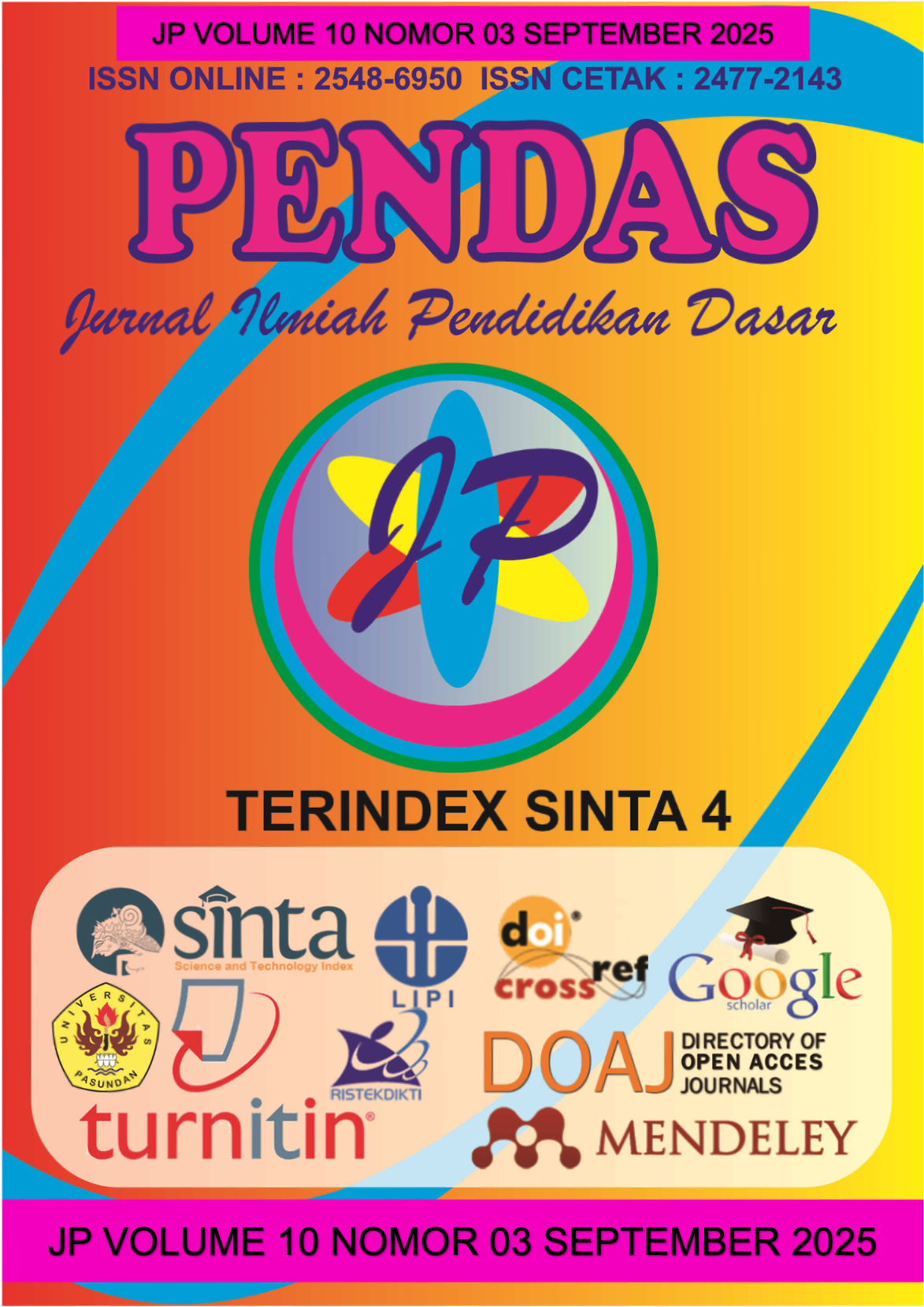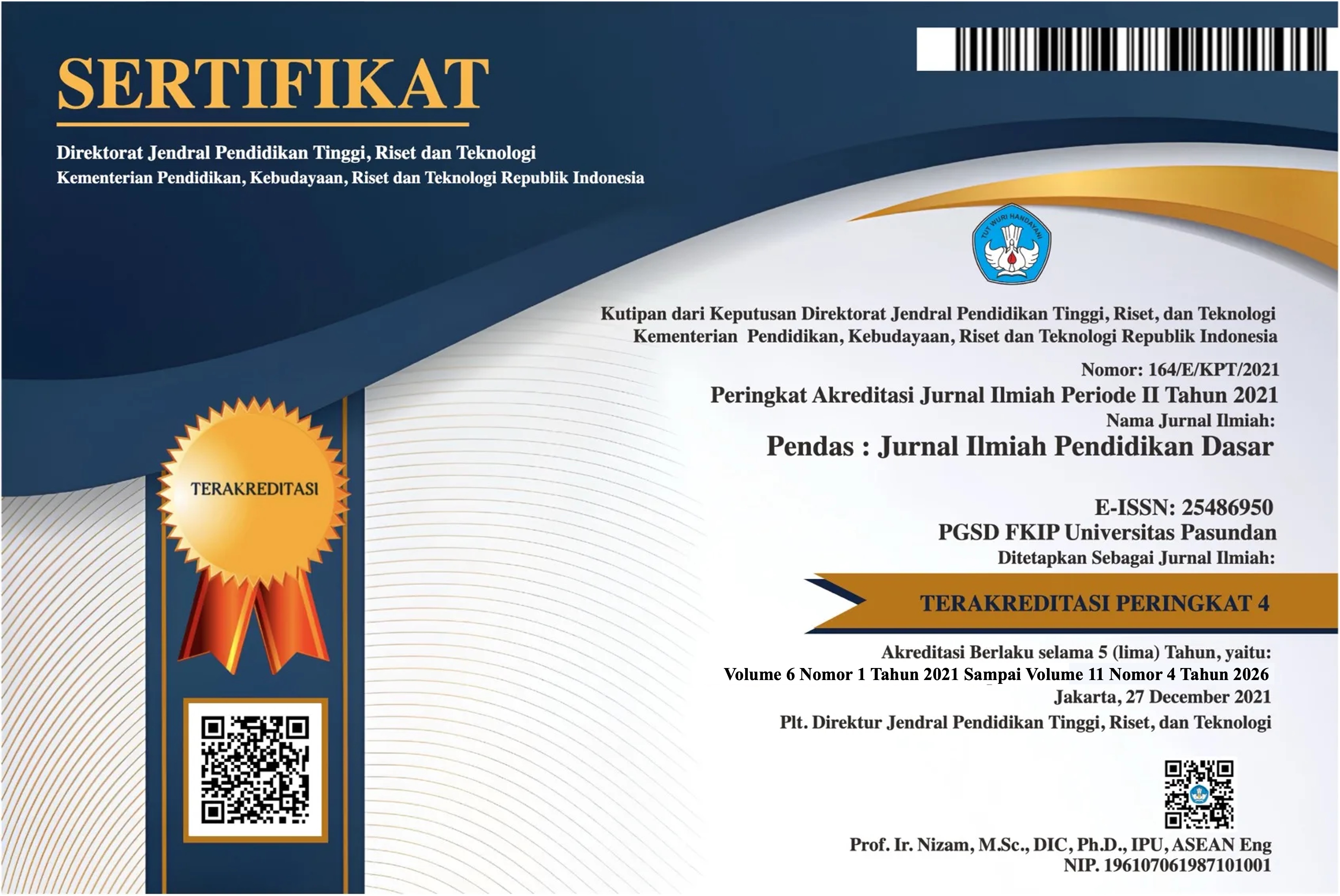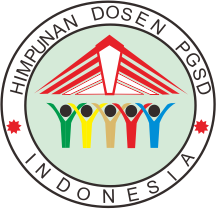EFEKTIVITAS MEDIA PEMBELAJARAN UBUR-UBUR TERHADAP PENINGKATAN MINAT BELAJAR SISWA PADA MATA PELAJARAN BAHASA INDONESIA DI MI NURUL HUDA BANJARSARI
DOI:
https://doi.org/10.23969/jp.v10i03.32928Keywords:
Jellyfish Learning Media, Learning Interest, Indonesian Language LearningAbstract
This study aims to investigate the effect of using the ubur-ubur learning media on improving students’ learning interest in Indonesian language subjects at MI Nurul Huda Banjarsari. The background of this study stems from the fact that many students find it difficult to maintain their interest in learning Indonesian, which is often perceived as monotonous and less engaging. This situation leads to low classroom participation, indicating the need for innovative learning media that can foster a more interactive and stimulating learning environment. The research employed a quantitative method with a pre-experimental design, involving one class with a total of 35 students. Data were collected through observation, questionnaires, interviews, documentation, and relevant literature sources. The findings reveal that the use of the ubur-ubur learning media significantly increased students’ interest in learning. This medium encouraged students to be more focused, active, and enthusiastic during the learning process. Furthermore, it created an enjoyable and meaningful classroom experience that enhanced student motivation. These results imply that teachers should develop and utilize innovative learning media as an effective strategy to improve the quality of education at the Madrasah Ibtidaiyah level.
Downloads
References
Agustina, C., Mujiyanto, M., & Sukisno, S. (2025). PENGARUH SELF EFFICACY TERHADAP MOTIVASI BELAJAR PESERTA DIDIK BERAGAMA BUDDHA. Dharmas Education Journal (DE_Journal), 5(2 SE-Articles), 980–986. https://doi.org/10.56667/dejournal.v5i2.1522
Aminullah, Balqis, R. R., & Hanifah, S. (2023). EFEKTIVITAS TEKNIK MODELING DENGAN PENDEKATAN REBT UNTUK MENINGKATKAN SELF EFFICACY SISWA DI SEKOLAH MENENGAH KEJURUAN MA’ARIF NU KENCONG TAHUN PELAJARAN 2022/2023. JEC, 2(02), 1–14. https://doi.org/https://doi.org/10.62097/jec.v2i2.1418
Anjani, N. D., Erfan, M., & Angga, P. D. (2025). Pengaruh Model Kooperatif Tipe Team Games Tournament ( TGT ) Berbantuan Media Konkret Ubur-Ubur terhadap Hasil Belajar IPAS Kelas V SDN 28 Cakranegara. Journal of Classroom Action Research, 7(2), 602–613. http://jppipa.unram.ac.id/index.php/jcar/index
Bandura, A. (1997). Self-efficacy: The exercise of control. In Self-efficacy: The exercise of control. W H Freeman/Times Books/ Henry Holt & Co. https://www.academia.edu/28274869/Albert_Bandura_Self_Efficacy_The_Exercise_of_Control_W_H_Freeman_and_Co_1997_pdf
Bella, S., Balqis, R. R., Nisa, N. I., & Muhyidin. (2025). Pelatihan dan Pendampingan Pembuatan Media Pembelajaran Kreatif Berbasis Video Podcast pada Guru TK, RA, PAUD, dan KB, se Kecamatan Kencong, Jombang, dan Gumukmas. JPMD, 6(1), 133–145. https://doi.org/https://doi.org/10.58401/jpmd.v6i1.1892
Damayanti, E., Azzuri, V. M., Ahmadi, R., & Nofitasari, I. (2024). Implementasi Teori Kognitif dalam Pembelajaran Bahasa Indonesia pada Kurikulum Merdeka di Sekolah Dasar. 9(1), 444–452.
Dr. Ahmad Susanto, M. P. (2016). Teori Belajar & Pembelajaran di Sekolah Dasar (Tambra23@yahoo.com (ed.); Cetakan ke). PRENADAMEDIA GROUP.
Dr. H. St. Rodliyah, M. P. (2021). Pendidikan & Ilmu Pendidikan (M. P. Prof. Dr. H. Moh. Khusnurridlo (ed.); Cetakan II). IAIN JEMBER Press.
Evhlin, M. L., Fidhyallah, N. F., & Zakiah, R. (2025). Pengaruh Collaborative Learning dan Self-Efficacy terhadap Learning Motivation Siswa melalui Student Engagement di SMKN 8 Jakarta. Jurnal Penelitian Ilmu Pendidikan Indonesia, 4(3 SE-Articles), 1855–1865. https://doi.org/10.31004/jpion.v4i3.669
Hidayah, N., Putri, M., & Arafanianda, S. (2024). The Effect of Blended Learning Method and Self-Efficacy on Students’ Self-Directed Learning. Jurnal Pendidikan Dan Pembelajaran Indonesia (JPPI), 4(3 SE-Articles), 1001–1015. https://doi.org/10.53299/jppi.v4i3.665
Inayah Adhani Khoirroni, Nur Avifah Dwi Apriliani, Dhiya Ulhaq Addinillah, Widya Tri Arianti, Destira Ayu Permana, Muhammad Ghulaman Dzaky, Fauzan Al Ansori, Putri Awaliyah, Cahya Adhi Susanto Sumardhi Dwi Putera, & Yoga Aditia Ragil. (2024). Pengaruh Media Pembelajaran Ubur-Ubur terhadap Numerasi Siswa Kelas II di SDN 06 Ciputat. Student Scientific Creativity Journal, 3(1), 213–224. https://doi.org/10.55606/sscj-amik.v3i1.4976
Karisma, E. T., Setiawan, D., & Oktavianti, I. (2022). Analisis Minat Belajar Siswa Pada Pembelajaran Kelas Iv Sdn Jleper 01. Jurnal Prasasti Ilmu, 2(3). https://doi.org/10.24176/jpi.v2i3.8366
Keller, J. M. (2010). The Arcs Model of Motivational Design BT - Motivational Design for Learning and Performance: The ARCS Model Approach (J. M. Keller (ed.); pp. 43–74). Springer US. https://doi.org/10.1007/978-1-4419-1250-3_3
Khurin’in Ratnasari, M. P. (n.d.). STATISTIK PENDIDIKAN (Analisis Data Penelitian Menggunakan SPSS).
Krapp, A. (2002). Structural and dynamic aspects of interest development: theoretical considerations from an ontogenetic perspective. Learning and Instruction, 12(4), 383–409. https://doi.org/https://doi.org/10.1016/S0959-4752(01)00011-1
Lestari, P., Sari, E. F. P., & Ayu, I. R. (2016). Pengaruh Model Pembelajaran Teams Games Tournament (TGT) terhadap Hasil Belajar Matematika. SAP (Susunan Artikel Pendidikan), 1(1), 10–20. https://doi.org/10.30998/sap.v1i1.1010
Minahasa, K. (2024). Pegaruh Penggunaan Media Pmbelajaran Games Berburu Ubur-Ubur Terhadap Kemampuan Numerasi Siswa Kelas V Di SD Negeri 2 Gempolan. 24(7), 28–42.
Novia Rahma. (2023). Games Edukasi Matematika Berburu Ubur-ubur.
Pagarra H & Syawaludin, D. (2022). Media Pembelajaran. In Badan Penerbit UNM.
Putri, G. M., Kawuryan, S. P., Saptono, B., & Fianto, Z. A. (2024). The Role of Emotional Intelligence in Improving Student Self-Efficacy. Jurnal Ilmiah Sekolah Dasar, 8(2 SE-Articles), 370–378. https://doi.org/10.23887/jisd.v8i2.68257
Rina Dwi Muliani, R. D. M., & Arusman, A. (2022). Faktor - Faktor yang Mempengaruhi Minat Belajar Peserta Didik. Jurnal Riset Dan Pengabdian Masyarakat, 2(2), 133–139. https://doi.org/10.22373/jrpm.v2i2.1684
Salsabila, G. V., Bila, S., & Ratnawati, E. (2024). Penggunaan Media Berburu Ubur-Ubur Untuk Meningkatkan Motivasi Belajar Mahasiswa Dalam Kajian Sosial. JSPH : Jurnal Sosial Politik Humaniora, 1(2), 1–8. https://doi.org/10.59966/jsph.v1i2.1266
Septiana, N. N., Prastowo, A., & Frasandy, R. N. (2024). Penggunaan Wordwall Untuk Menumbuhkan Kemampuan Berpikir Tingkat Tinggi Peserta Didik Pada Mata Pelajaran Bahasa Indonesia Di Madrasah Ibtidaiyah. Jurnal Holistika, 8(1), 71. https://doi.org/10.24853/holistika.8.1.71-85
Siti Mutmainah, M. P. (2021). Pembelajaran Bahasa Indonesia untuk calon guru SD/MI (Cetakan Pe). Nanopedia.
Sugiyono. (2016). Metode Penelitian Kuantitatif, Kualitatif, Dan R&D (ALFABETA (ed.); 24th ed.).
Umi Maftuhah. (2025). Guru Mata Pelajaran Bahasa Indonesia.
Downloads
Published
Issue
Section
License
Copyright (c) 2025 Pendas : Jurnal Ilmiah Pendidikan Dasar

This work is licensed under a Creative Commons Attribution 4.0 International License.



















